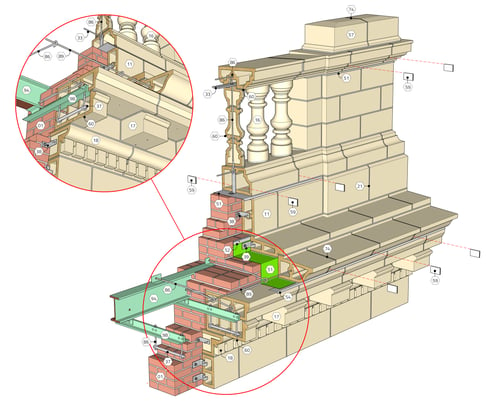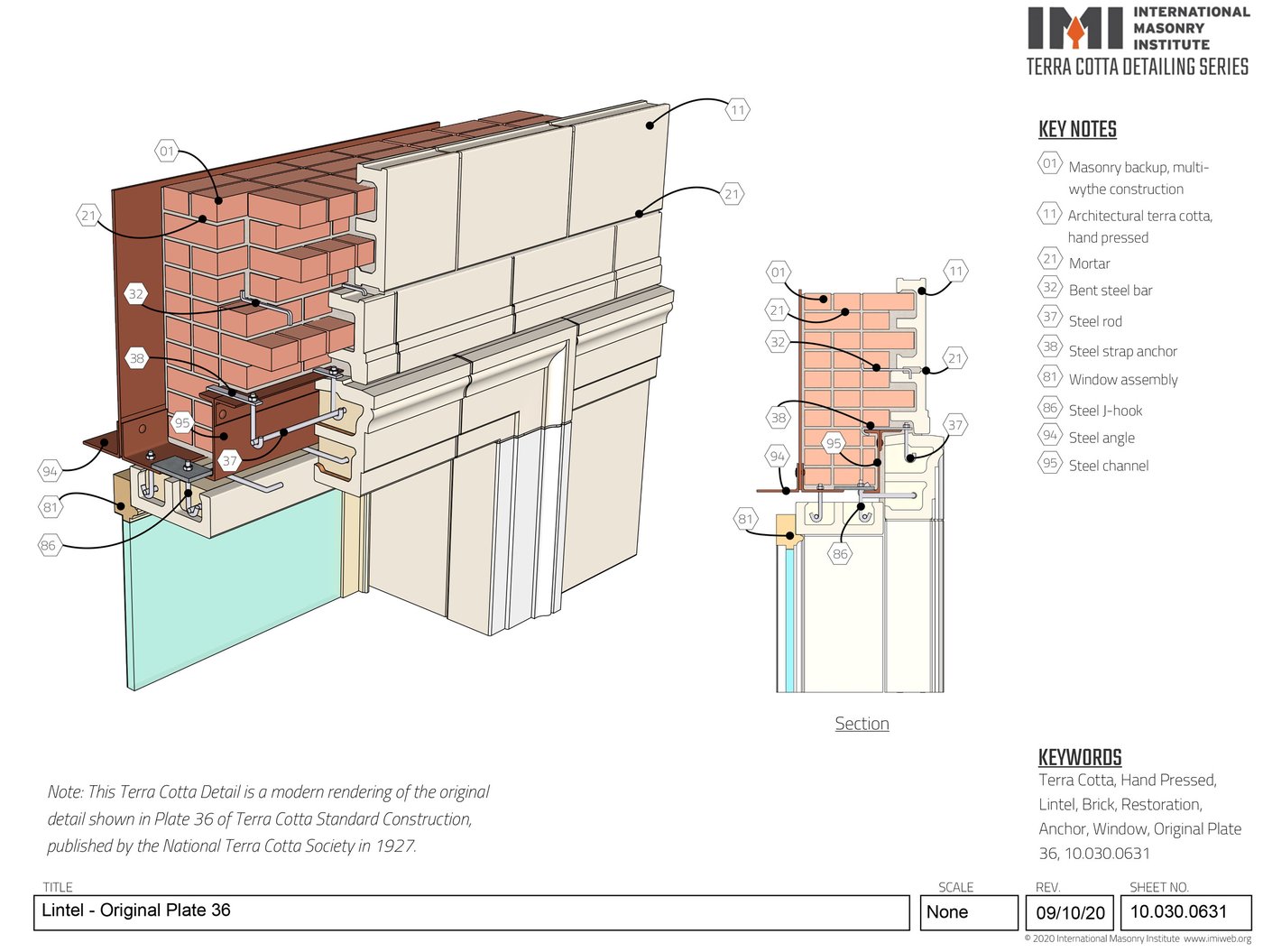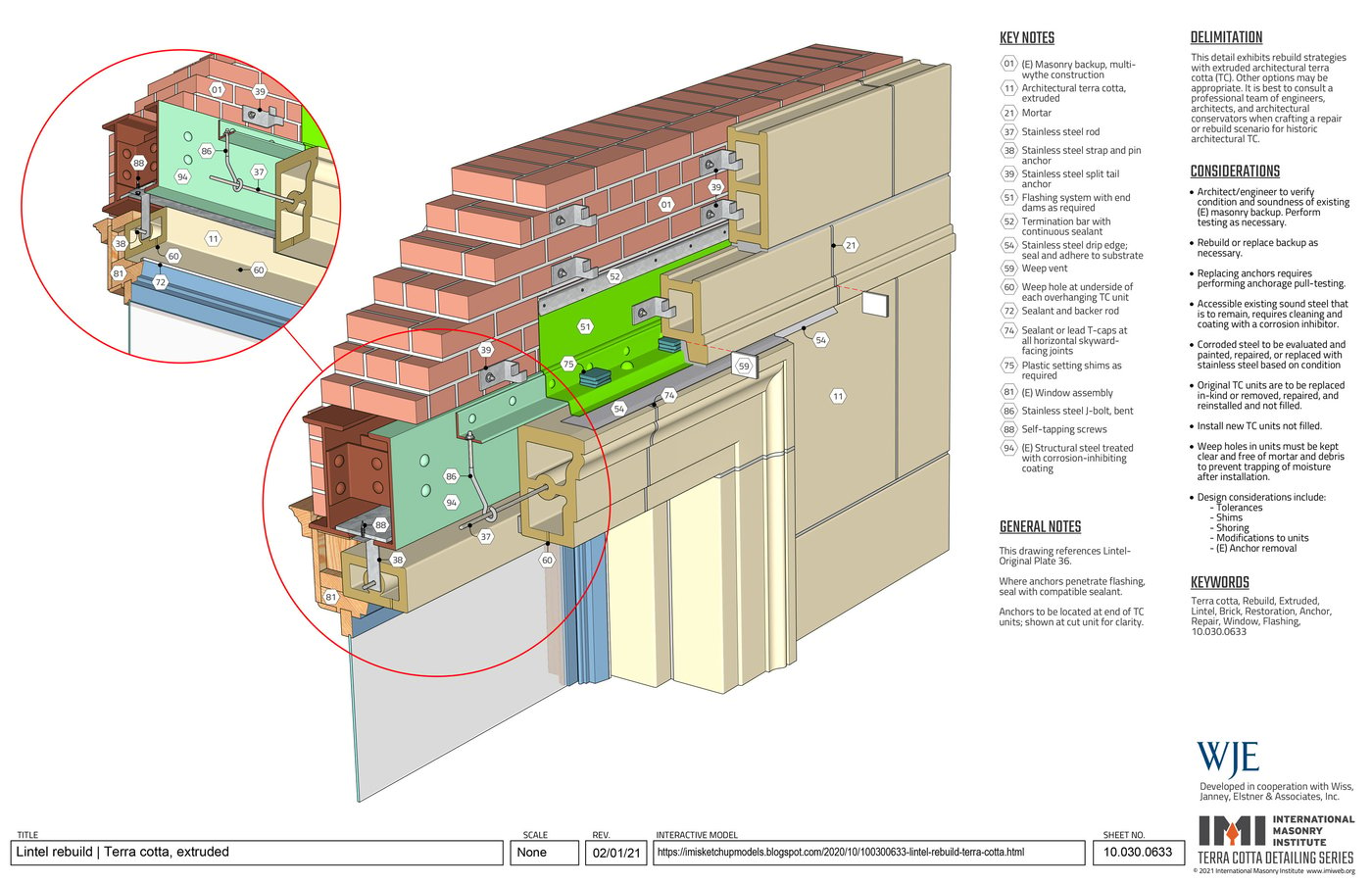 The International Masonry Institute’s (IMI’s) new architectural terra cotta details are a transformative resource for the restoration of historic terra cotta structures dating to the early 20th century. Developed by IMI in conjunction with Wiss, Janney, Elstner Associates, Inc (WJE); Boston Valley Terra Cotta; and Gladding, McBean, the details provide modern rebuild strategies for replacing existing terra cotta units with new pressed or extruded terra cotta units.
The International Masonry Institute’s (IMI’s) new architectural terra cotta details are a transformative resource for the restoration of historic terra cotta structures dating to the early 20th century. Developed by IMI in conjunction with Wiss, Janney, Elstner Associates, Inc (WJE); Boston Valley Terra Cotta; and Gladding, McBean, the details provide modern rebuild strategies for replacing existing terra cotta units with new pressed or extruded terra cotta units.
This marks the first major update to important architectural terra cotta details since 1927. The details are based on ones that originally appeared in the National Terra Cotta Society’s Architectural Terra Cotta Standard Construction, first published in 1914 and revised in 1927.
The details depict rebuilds for terra cotta window sills and mullions, window lintels, and building cornices and parapets. They provide best practices for moisture mitigation, structural steel protection, unit installation, and anchoring practices that are critical to the long-term preservation and performance of terra cotta buildings.
Architectural Terra Cotta Standard Construction was created at the height of architectural terra cotta popularity. Its purpose was to provide design professionals with general examples of appropriate architectural terra cotta detailing and construction. The publication offers rare insight into the ways in which architectural terra cotta could have been installed a century ago. It also sheds light on what elements of these assemblies may need restoration, repair, or rebuilding today. That is why IMI used these historic details as the foundation for its terra cotta rebuild details.

Restoration experts have learned through years of working on terra cotta buildings that some key design elements were not always included with original design and construction. These include lack of water management, lack of movement accommodation between the terra cotta masonry and steel components, and breathability concerns if the terra cotta cells were filled.
To improve durability, new components are introduced with rebuild strategies. The details include flashings to improve water management, stainless steel anchors substitute iron, cells in the terra cotta units are left open, and horizontal skyward-facing joints are protected by using sealants or lead t-caps in lieu of original mortar. Additionally, understanding thermal differences between the masonry and steel, and introducing shims or other ways to accommodate some movement is important. Alterations from the original design should be considered on a case-by-case basis by the design professional. However, mindfulness to the new mortar, new stainless-steel anchors, and new terra cotta unit manufacturing process for rebuild should consider the overall wall system from movement, water infiltration, corrosion, as well as breathability to create a long-lasting and durable restoration solution.

In conjunction with these details, IMI launched a complementary hands-on training for members of the International Union of Bricklayers and Allied Craftworkers who participate in IMI’s Historic Masonry Preservation Certificate (HMPC) program. The new terra cotta module focuses on delivering the same best practices and rebuild strategies to restoration craftworkers, using full-scale architectural terra cotta mock-ups, with pressed and extruded material provided by Boston Valley Terra Cotta and Gladding, McBean, and hardware supplied by Hohmann & Barnard, Inc.
For more information on architectural terra cotta restoration and other masonry restoration related resources, visit IMI’s restoration page. For restoration project assistance, reach out to IMI directly at masonryquestions@imiweb.org.
Explore the latest releases to IMI's Architectural Terra Cotta Detailing Series:












